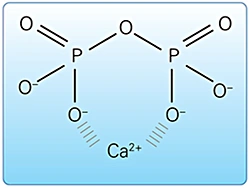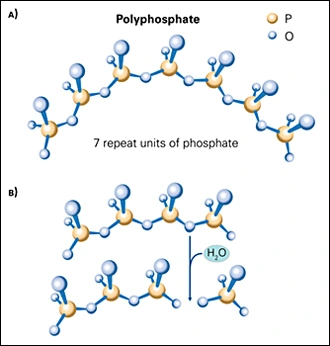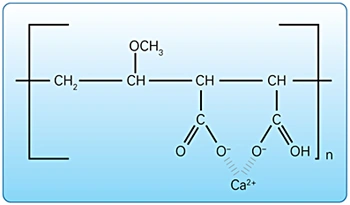Fundamentals of Dentifrice: Oral Health Benefits in a Tube | Dentalcare.ca
Course Number: 410
Course Contents
Calculus Control
Dental plaque calcifies when calcium phosphate begins depositing in it. Under normal conditions, the oral fluids are saturated with calcium and phosphate, which is important for maintaining sound enamel. However, this abundance of mineral ions also contributes to calculus formation on the tooth surface (i.e., calcification of plaque biofilm). The amount and type of calcium phosphate salts present vary greatly but include brushite, octacalcium phosphate (OCP), tricalcium phosphate (TCP) and apatite. While supragingival calculus forms from saliva, subgingival calculus forms either from saliva or crevicular fluid. Dental calculus that forms from crevicular fluid can contain heme and some breakdown products which make it pigmented. It is called serumnal calculus. Calculus forms most readily in areas which are adjacent to the openings of the salivary ducts, where the calcium phosphate in saliva is least stable. In populations with poor oral hygiene, supragingival calculus can be extensive and result in gingival recession. Calculus formation can be controlled by adding mineralization inhibitors to dentifrices and mouthrinse. The chemical agents used most often for calculus control in dentifrice are described briefly below.71
Pyrophosphate. Phosphate is a ubiquitous chemical group found in biological systems. As shown in (Figure 14), two phosphate groups combine chemically to form a molecule called pyrophosphate (P2O74-).
Pyrophosphate occurs naturally in saliva and plays a role in inhibiting calculus formation. These molecules chelate calcium (Figure 15), slowing the rate of nucleation (crystal formation) and calcification of plaque. The pyrophosphate binds to calcium in a growing crystal, essentially slowing further crystal growth at that site and effectively decreasing calculus build-up (Figure 16). Original Crest® Tartar Control dentifrice contained 3.3% pyrophosphate. It was the first tartar control dentifrice introduced to the market, and the first tartar control dentifrice to receive the ADA Seal of Acceptance.72,73
Figure 14. Pyrophosphate.
Two phosphate groups combine to form pyrophosphate.
Figure 15. Pyrophosphate.
Negatively charged pyrophosphate molecules bind (chelate) positively charged calcium ions.
Figure 16. Anticalculus Action.
Pyrophosphate inhibits calculus formation by inhibiting calcium phosphate deposition in plaque.
Sodium hexametaphosphate (SHMP). SHMP is a large polyphosphate molecule and has multiple calcium binding sites in one molecule. It is a very effective calculus inhibitor. Because it works only on the surface, it is sometimes called a calcium surface active builder. SHMP is susceptible to hydrolysis, and must be formulated in a low water dentifrice to be stable (Figure 17).68,69 SHMP particles will not dissolve in low-water formulations, so the SHMP particles may be perceived as “gritty.” However, these particles are highly soluble in water and will begin dissolving immediately upon brushing without imparting abrasive action.
Figure 17. SHMP Hydrolysis.
(A) SHMP is a polyphosphate created from a chain of repeating phosphate units. (B) The hydrolysis or breakdown of SHMP proceeds to single phosphate molecules, although many intermediate products are also produced.
Zinc. Zinc salts (e.g., zinc citrate, zinc chloride, zinc lactate) are used in some tartar control dentifrices and oral rinses, and have been shown to be moderately effective at controlling calculus.76 Positively charged zinc ions (Zn2+) inhibit crystal growth by substituting for calcium in the crystal lattice of calcium phosphate. This interferes with the crystal formation and slows crystal growth. As a result, calculus formation is reduced.
Gantrez®. Gantrez® is a copolymer of methylvinyl ether (PVM) and maleic acid (MA) and is an ingredient in Colgate® Total® dentifrice. The mechanism of action for this co-polymer is to bind (chelate) calcium ions, thus inhibiting plaque mineralization (Figure 20).
Figure 20. Gantrez® calcium chelation.






